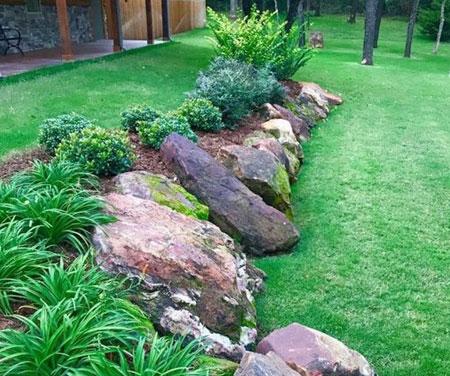How to Prevent Flooding in the Garden
With climate change bringing about unpredictable weather, how can you prevent your garden from being flooded - or possibly even your home?
21/10/2019
https://pinterest.com - 417357090464852912/?nic=1
Climate change has resulted in a dramatic impact on our local weather systems. Many provinces are experiencing drought while others are being bombarded by several storms. With so many changes taking place, it helps to be prepared for almost anything and everything, and in this article, we look at how you can prevent your garden from being flooded, or ultimately even your home is damaged as a result.
Level out your garden
One of the first steps towards preventing flooding is to level out your garden or to make sure that any excess water is directed away from the property. A garden that slopes towards your property already sends a hefty flow of water in your direction, so taking steps now to remedy this will prevent disasters in the future should heavy rainstorms occur.
Securely footed retaining walls, permeable materials to help drain water away, and French drains will ensure that any excess water during a rainstorm is removed before it becomes a danger to your home and your family.
https://pinterest.com - 545217098640545497/?nic=1
Landscape for a water break
If levelling out the garden is not feasible, an alternative to consider is to add berms to direct the flow of water away from your home. A berm is simply a mound that is covered with grasses or sturdy plants that becomes a decorative feature while offering added protection from water runoff.
You can cover a berm in a variety of plants but the roots should be fine and grow deep to be effective as a retaining feature. According to landscaping network, there have been studies on the use of fast-growing drought-resistant trees such as acacia, planted on slopes as a water break. The trees were 'topped' every couple of years to force growth into the root system, effectively solving specific garden water drainage problems.
https://pinterest.com - 543598617524906353/?nic=1
Another way to create a water break is to put down gravel or sharp sand and lay paving blocks over the top of this. This is a form on permeable landscaping that allows water to flow through and into the soil, rather than builds up and pool on top of the garden.
https://pinterest.com - 827606869007697638/?nic=1
Pebble river or French Drain
Closer to the property you could consider digging out a shallow trench along which water runoff can flow. The trench can be filled with small pebbles or rocks to help with drainage - like a dry river bed, or you could look at putting in a French drain. A French drain isn't hard to install and helps a lot towards removing excess water and directing it away from your home.
https://pinterest.com - 376050637630781347/?nic=1
Ensure beds allow proper drainage
If garden beds and borders are regularly dug over with a fork, this will ensure faster drainage in these areas. The same applies to large grassed areas of lawn. Regular aeration of compacted soil will assist in soaking up excess rainfall.
Direct water away from your property
A steeply sloped driveway leading to your property can be a nightmare, even when it's only raining normally. Throw in a rainstorm or two and you could be heading for trouble.
landscapingnetwork.com
You need to take as many measures as you can to direct water away from the property. On an existing property, particularly those that are below street level, you need to look at having driveway drains installed. Alternatively, a trench drain, also known as a French drain, can be dug and installed in front of the garage and direct water away. The drain should be as wide as the driveway and deep enough to accommodate a large flow of water. The drain is covered by a fine mesh metal grate to keep it free of debris that could clog the drain.






